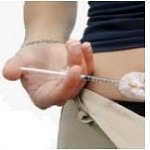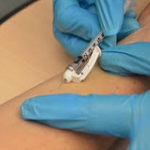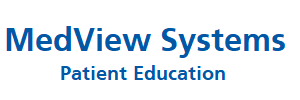

Pediatric Subcutaneous Injections
Subcutaneous injections can be given straight in at a 90 degree angle or at a 45 degree angle. Give the injection at a 90 degree angle if you can grasp 2 inches of skin between your thumb and first finger. If you can grasp only 1 inch of skin, give the injection at a 45 degree angle.
Guidelines, Specifications & User Manuals
Subcutaneous Injections Pediatrics – Children’s Minnesota Hospital
Helpful Information
Medicines you give just below the skin are called subcutaneous (SC) or SubQ injections. These injections (shots) are given into fatty areas of the body called injection sites.
The nurse will show you the following steps and give you time to practice before you give a subcutaneous injection to your child.

Getting ready
- Wash your hands with soap and water. Dry them well. Or, use an alcohol-based hand sanitizer. See “Do you know… Clean hands.”
- Clean a workspace with an alcohol prep pad. Throw away the alcohol pad.
- Gather the supplies and open them onto this workspace.
The supplies you need are:- Syringe ( ________ ml size) that contain the medicine to be given
- 30 gauge (½ inch) BD Eclipse safety needle
- One 1ml Chloraprep® applicator
Not for patients allergic to Chloraprep® or under 2 months of age. For these patients, use an alcohol prep pad - Sterile gauze pad
- Sharps container

- Twist the needle (30 gauge) onto the syringe. Place the syringe onto your cleaned workspace.
- Choose the injection site.
- Open the Chloraprep® applicator and remove it from the package. Do not touch the sponge tip.
- Pinch the wings of the applicator to release the solution. You should hear a pop.
Giving the medicine
- Press the Chloraprep® on skin 3 times. Then, clean the area where the needle will be inserted using a back and forth motion for 30 seconds.
- Let the skin dry for 30 seconds. Do not blot or wipe. Do not blow on the cleaned skin. Let air dry.



- Pick up the syringe and pull back on the needle’s safety cover toward the syringe. Pull the needle cap straight off the needle (do not twist). Set the cap aside.
- Pinch the cleaned skin and fat between your thumb and first finger. Be careful not to touch the injection site itself.
- Hold the syringe between the thumb and first finger of the other hand. Insert the needle into the skin quickly at a 45 degree angle (as shown in the pictures) or 90 degree angle (straight up and down). The quicker you insert the needle, the less it hurts. Your nurse will teach you the correct angle to use for your child.
- Take the needle and syringe out. Cover the site with the gauze.
- Do not recap the needle. Instead, use the safety cover right away. Using the same hand that is holding the syringe, place your thumb on the finger pad area of the safety cover. Push the cover forward over the needle until you hear or feel it lock.
Disposing of the medicine and supplies
- Place the needle and syringe into a patient sharps container.
- When your sharps container is ½ to ¾ full, ensure the lid is on tightly, and dispose of it in the trash can. You can also use a coffee can to dispose of sharp objects. Before throwing the can away, you must cover the plastic lid with heavy-duty tape, such as duct tape. The tape will stop sharp objects from sticking through the plastic lid. Do not put sharp objects in glass or clear-plastic containers. Do not put sharp objects in any container that will be recycled or returned to a store.
Keep containers with sharp objects out of the reach of young children.
- When your sharps container is ½ to ¾ full, ensure the lid is on tightly, and dispose of it in the trash can. You can also use a coffee can to dispose of sharp objects. Before throwing the can away, you must cover the plastic lid with heavy-duty tape, such as duct tape. The tape will stop sharp objects from sticking through the plastic lid. Do not put sharp objects in glass or clear-plastic containers. Do not put sharp objects in any container that will be recycled or returned to a store.
- Dispose of other supplies in the regular trash.
- Clean your hands again after throwing away used supplies.
Injection sites
Subcutaneous injection sites are:
- Back of the upper arms,
- Thighs, and
- Abdomen (except for the
navel and the waistline).
Rotate the sites so the fat areas do not get irritated and scarred.
The nurse can help you locate the correct sites.


- Wash your hands with soap and water or use an alcohol-based hand sanitizer. See “Do you know… Clean hands.”
- Do not use any medicine that has changed its color or has flakes or specks in it.
- If a sterile syringe part is touched, do not use it. Change the un-sterile part for a sterile part, or start over again.
Questions?
If you have any questions or concerns, please call 901-595-3300 and ask for your child’s primary clinic. If you are calling after hours or on the weekend, ask for the nursing shift leader. If you are outside the Memphis area, dial toll-free 1-866-2STJUDE (1-866-278-5833).
St. Jude complies with health care-related federal civil rights laws and does not discriminate on the basis of race, color, national origin, age, disability, or sex.
ATTENTION: If you speak another language, assistance services, free of charge, are available to you. Call 1-866-278-5833 (TTY: 1-901-595-1040).
ATENCIÓN: si habla español, tiene a su disposición servicios gratuitos de asistencia lingüística. Llame al 1-866-278-5833 (TTY: 1-901-595-1040).
Related Devices
The Perfusor Space 2nd Generation Syringe Pump
The Perfusor® Space 2nd Generation Syringe Pump The Perfusor® Space 2nd Generation Syringe Pump Read more...
Elastomeric IV Pump Systems – Instructions
ON-Q PainBuster Post-Op Pain Relief System. ON-Q painbuster pump provides continuous infusion Read more...
Vista® basic Infusion Pump Instructions
Vista Infusion Pump UPC: 637-202 B. Braun pump sets offer comprehensive standard Read more...
Crono Super-PID subcutaneous pump Instructions
Crono Super PID Ambulatory Syringe Infusion Pump The Crono Super PID is Read more...
CADD Prizm IV Pump Instructions
CADD® Ambulatory Infusion Systems, The CADD-Prizm® pump is indicated for intravenous, intra-arterial, Read more...
TPN Setup with IV pump Instructions
TPN stands for Total Parenteral Nutrition. Healthy individuals get their Read more...
How to prepare and administer TPN Instructions
TPN Administered TPN administration into a vein, generally through a Read more...
CADD PRIZM 6101 – TPN IV Setup
CADD PRIZM 6101 - TPN IV Setup The CADD-Prizm pump is indicated Read more...
Sapphire Infusion Pump Instructions
Sapphire™ infusion system This unique patented technology, innovative design and Read more...
CADD 6500 IV Pump Instructions
CADD Legacy Plus Pump The Legacy Plus Model 6500 is the Read more...
Hospira GemStar Infusion System
GemStar™ Infusion System From pain management to ambulatory infusions and anywhere in Read more...
CADD®-Solis Ambulatory Infusion Pump Instructions
CADD®-Solis Ambulatory Infusion Pump with Wireless Communications Wireless communication transforms Read more...
Medfusion 3500 Syringe Pump Instructions
Medfusion 3500 Syringe Pump Designed to enhance safety while maintaining simplicity to Read more...
B Braun Syringe Pump Instructions
Perfusor Space Syringe Pump The first syringe pump to include air and road Read more...
Z-800F – Zyno Medical Ambulatory Infusion System
Zyno Medical's Z-800 F infusion pump Zyno Medical's Z-800 F infusion pump Read more...
Medfusion® 3500 Syringe Pump
Medfusion™ 3500 Syringe Pump The Medfusion™ 3500 Syringe Pump is an intuitive Read more...
Zyno Medical Nimbus™ Ambulatory Infusion System Instructions
Nimbus™ II Flex Nimbus™ II Flex is a sleek and cutting-edge ambulatory Read more...
Alaris – IV Pump Instructions
Alaris™ Pump The BD Alaris™ PC unit is the foundation of a modular Read more...
Baxter Sigma Spectrum Infusion Pump
Baxter Sigma Spectrum IQ Infusion System With Dose IQ Safety Software is Read more...
Curlin pump TPN setup Instructions
CURLIN MEDICAL PUMP - TPN The Curlin Medical 6000. CMS Pump is Read more...
MOOG Medical, Curlin 4000 CMS IV Pump
MOOG Medical, Curlin 4000 CMS The 4000 Clinical Management System (CMS) is Read more...

